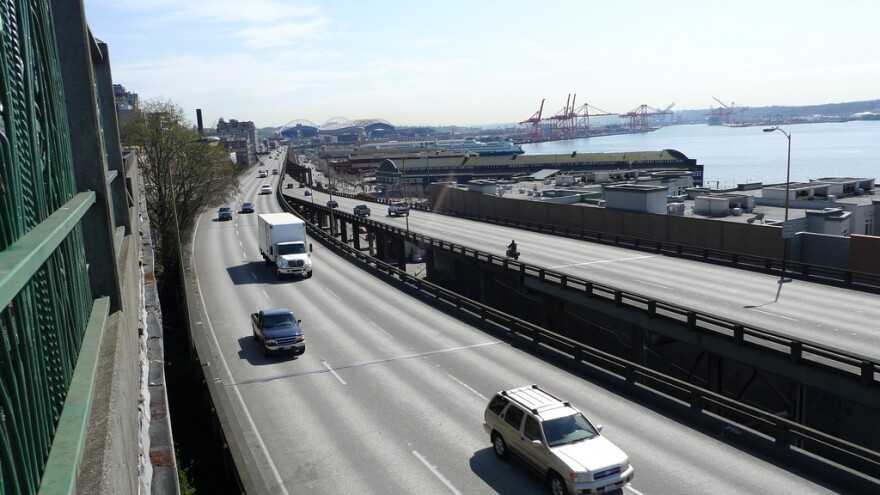Anyone who's hosted a party has probably had that panicky feeling beforehand: What if you throw a big party and nobody comes?
State transportation officials face a similar worry: What if after they build a $3.1 billion underground highway to replace the Alaskan Way Viaduct, not enough people use it?
Build It And They Won't Come?
The state Legislature has decreed that tolls have to pay for $200 million of the state Route 99 tunnel's construction cost.
But if the tunnel tolls are too high, drivers might just skip the underground party entirely. They might stay home, take a bus or use city streets instead.
"The downside of setting tolls too high is that people choose not to use the tunnel and not to pay the toll," said Maud Daudon, CEO of Seattle Metropolitan Chamber of Commerce and co-chair of a Washington State Department of Transportation panel that's been studying tolling on state Route 99. "So you end up with very congested city streets and a beautiful new tunnel that's not going to be used for the kind of purpose it was intended for."
[asset-images[{"caption": "Tolling is already in place on state Route 520 across Lake Washington.", "fid": "10401", "style": "card_280", "uri": "public://201402/520toll.jpg", "attribution": "Credit Flickr Photo/Wonderlane (CC-BY-NC-ND)"}]]The tolling advisory committee recommended keeping the tunnel's tolls low, but charging them around the clock: $1.25 during rush hour and $1 at other times, including weekends and holidays. The committee considered tolls up to $3.25 per car.
Daudon said the committee's recommended rates should hit the sweet spot of raising funds without driving commuters away.
Eventually, the Washington Transportation Commission will decide how much to charge to use the tunnel.
Traffic on state Route 99 in its current, earthquake-damaged incarnation atop the Alaskan Way Viaduct has dropped 44 percent since construction got under way at the viaduct's southern end.
Most of the change comes from 33,000 extra commuters each day hopping on buses instead of getting behind the wheel.
Clark Williams-Derry, with the environmental group Sightline Institute, argued the shifting travel patterns show that Seattle could get by just fine without a waterfront highway, whether or not Bertha the tunnel machine ever gets her nose back to the grindstone.
[asset-images[{"caption": "Bertha made it a little more than 1,000 feet before breaking down in early December. ", "fid": "7753", "style": "placed_wide", "uri": "public://201312/berthatunnel.jpg", "attribution": "Credit Flickr Photo/WSDOT (CC-BY-NC-ND)"}]]
Bertha Update
Tunneling has been largely stopped since early December when Bertha, the five-story-tall tunnel machine, apparently suffered damage to the seals surrounding its main bearing.
There's still no word on when Bertha might be able to resume digging beneath the Seattle waterfront.
Chris Dixon with Seattle Tunnel Partners told reporters Thursday tunneling is only one month behind schedule right now. Dixon declined to estimate how many months it might take to repair Bertha or whether it's even possible for the tunnel to be completed on time.


